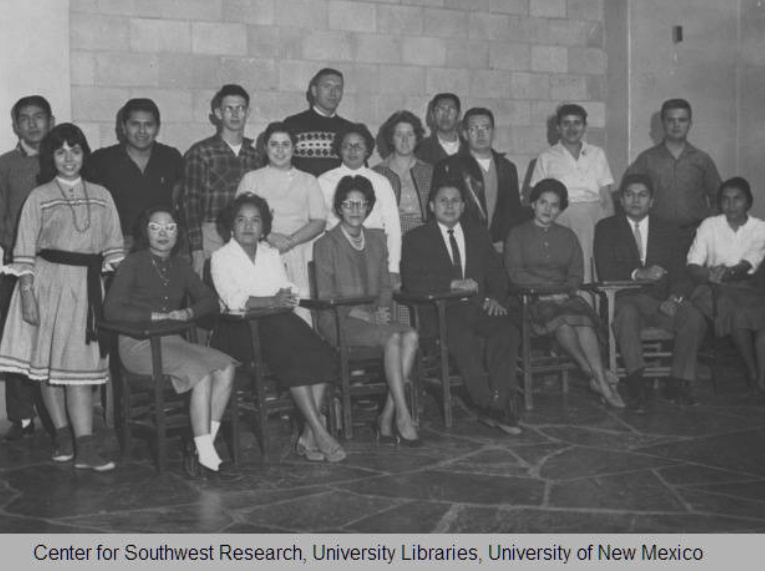
The Kiva Club
1952
A group of fifteen to seventeen Native Americans established the Kiva Club in 1952, making it the first Native American organization at UNM. The Kiva Club has had and continues to have many purposes, such as representing Native American students on campus by voicing their concerns and views of the University. Kiva Club also encouraged students across UNM to become involved in the many social issues that surrounded the Native American population. For example, voting rights, public education as well as religious freedoms. Along with events that different communities held. Kiva Club also strived to help preserve Native American culture and values by again setting up a support system for new Native American students coming to the University as well as bring Nizhoni days to the campus to spread and teach others about Native American culture. The group encouraged higher education for the Native American population by going to the many Indian boarding schools throughout New Mexico talking about the importance of higher education and opportunities that could help them become future students such as finical aid and scholarships. The Kiva club also contributed to many improvements on the UNM campus along with the hosting of New Events which included the creation of the KUNM radio program, and the Native American Studies Center. New events included the Nizhoni Days Pow Wow and Nizhoni activities the first of theses events were in 1953 and where hosted on the old Zimmerman field which is still a yearly tradition at UNM. The group also co-administrated the Elva R. Benson memorial scholarship. The Kiva club still spreads awareness about social issues and preserve native American culture. The Kiva club is now one of many Native American organizations at UNM but is one of the largest and oldest student lead Native American organization in the United States.
Tyler Roberts, Biology, 2021
Source
Lee, Llyod l., Mary A. Tsosie, and Kelly Francisco. Native Americans and the University of New Mexico. Albuquerque: University of New Mexico, 2017.
